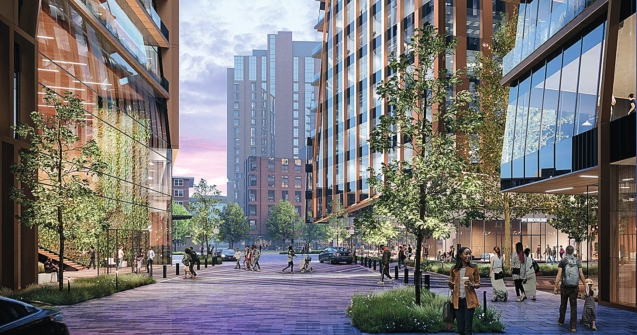

The Longwood Place development is barreling forward despite a community sharply divided over the shadows it would cast on the adjacent Emerald Necklace.
Longwood Place has received a unanimous go-ahead from the Boston Planning and Development Agency (BPDA) Board of Directors, with many residents and community groups voicing strenuous opposition over concerns it would harm the neighboring parks.
Developers cast doubt on that claim, and the project garnered support for the much-needed housing it would provide. The decisive struggle will take place in the years to come during each individual building’s public review process.
Longwood Place is a 1.7 million square foot development on Brookline Avenue, intended as a major element of the new campus Simmons University is moving into two streets away. Far from just an academic center, the three-part plan would include affordable housing, retail, restaurants and public community spaces.
The massive project took a lumbering step forward January 19 when the BPDA approved its planned development area, a zoning tool outlining the broad strokes of the buildings’ dimensions. The decision followed hours of furious debate, with opponents accusing the project of selling out Boston’s vanishing green spaces and ignoring the area’s development rules.
Guidelines the Longwood Medical Area adopted in 2003 would have placed greater restrictions on the development’s shadows, but since they were never formally adopted into the zoning code they aren’t legally binding.
City Councilor Kenzie Bok, while supportive of the project, said it “underscores the reason things need to go past guidelines and actually be codified. Parks advocates shouldn’t have to man the barricades every time.”
“That shadow is the biggest problem we face. At this point the project itself, in every other respect, is there,” said Tim Horn, president of the Fenway Civic Association.
“But until we can get the shadows into a shape where they don’t create a precedent for coming projects, we need to table this one. Come back in a month, see what happens. It takes a little bit more to make this the perfect project.”
“The proposal would not just damage the tree canopy and wildlife in this section of the Emerald Necklace, but also the humans that depend on this green space,” wrote Jennifer Riley. “These spaces are crucial to heat abatement, flood control and carbon sequestration in our largely paved city. If anything, we urgently need more such open spaces. Contemplating selling off the few that we have is madness.”
Supporting the proposal is a broad coalition of groups, including the Fenway Community Development Corporation, several city councilors, the many allies of Simmons University and residents valuing affordable housing and the improvements to on-site public space.
Kelly Farrell, an ecologist and landscape designer for the project’s architecture firm, pointed out that the few studies conducted on this kind of intermittent shadow are conflicted on whether it actually harms plant life.
“I was brought on to investigate shadows because before I became an architect, I spent several years conducting habitat surveys in the northeast. I know and love the plants and habitats in our cities and the wild,” she said.
“The shadows have currently been minimized to the early morning and later afternoon when sunlight is less direct. It’s impossible to say with precision what the impact of these limited shadows will be, but we don’t believe they will have a substantial negative impact on the mature canopy trees of the Emerald Necklace. The current understory is composed of species that are well-adapted to shade.”
The project still has years of planning and development ahead of it. Simmons University will be moving to the nearby campus this year, but Longwood Place itself isn’t expected to begin construction until 2026.
Developers hope to complete the first building around 2030 and have the project fully constructed in 2036.